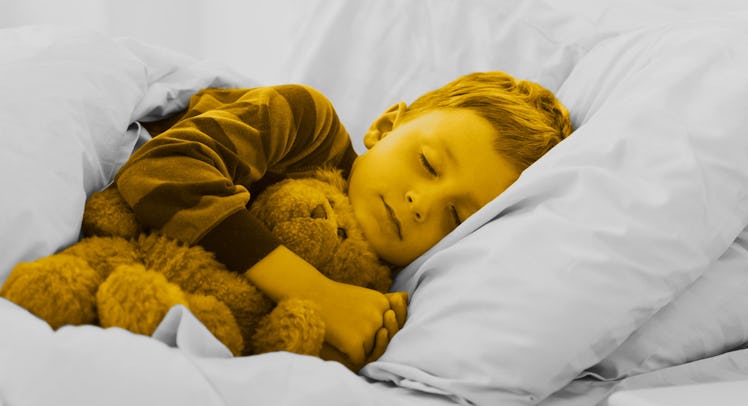How to Wean a Child Off a Security Blanket, Stuffed Animal, or Pacifier
Kids who need to let go of objects they hold for comfort and security should be approached with empathy and a gentle hand.

A child’s pacifier and security blanket are known as “transitional objects.” They’re transitional in that they provide a bridge between a period of constant comforting attachment to mom and dad and a growing independence in the world. They are a means by which a kid teaches himself or herself self-regulation. Still, transitional objects cease to be helpful when they foster dependence. So at some point, a parent needs to know when to take away the pacifier.
“It depends on how dependent on it they are to function,” explains pediatrician Dr. Jack Maypole, adviser to the Goddard School and associate professor of pediatrics at Boston University School of Medicine. “If it starts to become an insurmountable obstacle to the well-being of the child, there may be a need to strategize with partnering folks at childcare, babysitters, or family members,” Maypole says. Because it turns out that consistency is key. There’s simply no use in having inconsistent guidelines on pacifier use, security blankets, stuffed animals or other comforts. And first and foremost among those guidelines should be to not shame the kid for their behavior.
“That’s the worst thing you can do,” says Maypole. Though he does acknowledge that the frustration around transitional object behavior can be very real. “You’re beating them up over something they can’t do anything about. It’s just not constructive.”
How to Take Away a Pacifier, Security Blanket, or Stuffed Animal
- Make sure to choose a time to start weaning when a child is healthy, has parents available, and isn’t experiencing any big stressors.
- Ensure that all partners in your child’s wellness, including grandparents, teachers, and babysitters, are on board with the plan.
- Make sure that the object is available only during the most stressful times in a kid’s life and reward them when they return it.
- Build a schedule that slowly increases independence without the object and adds a series of rewards to encourage leveling-up.
Interestingly, the guidelines around weaning a kid from a transitional object are pretty consistent regardless of what the object is. The idea is to make the object less available, but not totally unavailable. The important part is that the object is available during the times when it is most necessary.
“You also can praise them if they give it back,” Maypole encourages. “Give them a fist bump or high-five. Reinforce the behavior that giving it back is a great thing. Rewards always get you farther.”
Maypole also suggests creating a plan, complete with goals that allow a kid to level-up, as if they were playing a video game. It can be a matter of building a calendar where every week the goal is to spend more time away from the object. This can be paired with simple rewards, like stickers or crackers, to encourage moving to the next level.
It’s important to note that some kids hold on to transitional objects even up until 4 years old. It’s totally fine to allow them to come to the conclusion it’s time to move on their own terms. “They tend to give it up through a combination of peer-pressure and self-consciousness, or frank rules related to school.”
But most importantly, Maypole stresses the key is to “Know your kid, what plays to their strengths and how best they are motivated.”
This article was originally published on